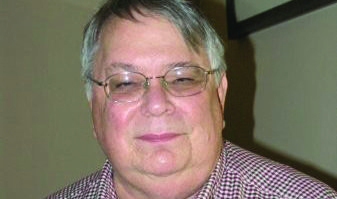
It was the era of John F. Kennedy, space exploration and the Cold War. It was a time of danger from Cuba and the beginnings of the expansion in the Vietnam War.
And it also just happened to be the early day of FM stereo, the broadcasting technology that would in 10 years or so steal the dominance of AM radio, bringing us high-fidelity audio and music as a number one format.
I’m talking about the year when Arno Meyer founded Belar Electronics Laboratory Inc., responding to the need for a technologically more advanced monitoring system for FM stereo.
By the time that I came along as a teenager and became involved in radio engineering, the FMM-1 monitor from Belar was nearly ubiquitous; and I remember doing my first FCC required proofs using one and a used HP 334 distortion analyzer. It’s hard to imagine FM broadcasting without Belar, which has been there all the way from the early days to HD Radio, supplying the test gear we use to ensure that our stations are at their best.
It has been 50 years since the founding of Belar; and in honor of that anniversary I reached out to talk about the radio industry and manufacturing with Arno Meyer, who graciously agreed to an interview.
Michael LeClair: How has the broadcast industry changed since you founded Belar?
Arno Meyer: When I left ITA in 1964 to start Belar, there were 4,236 AM stations, but just 2,306 FM stations and 847 TV stations. Ownership was much more diverse in the 1960s than now. Group owners were limited to seven AM, seven FM and seven TV stations, and many of the groups had outlets only in the largest markets. Most stations were independently owned. At that time, much of the legacy broadcast equipment was vacuum-tube. The rules for multiplexed FM stereo had been approved just three years earlier in 1961. Some old-line equipment manufacturers such as HP and GE were leaving the market.
Now the number of FM licenses is approaching 11,000. By the way, the advent of multiplex stereo, combined with the obvious advantages of transistor-based designs, were additional motivation to produce our original FM monitors. The circuit stability afforded by solid-state designs allowed us to build wide-bandwidth and low-distortion instruments. The industry made the transition to solid-state equipment, and the performance and reliability of the equipment rose over the years. Some of our designs actually led to higher operating standards. By contrast, during the early ’60s, some of the better peak flashers were driven by vacuum-tube thyratrons.

Of course, the advances in semiconductor technologies were incorporated in broadcast equipment as they became available, allowing improved performance and reliability. This made the introduction of ATS (automatic transmission system) control feasible. We progressed from discrete transistors to integrated circuits — first bipolar, then CMOS. More recently, the introduction of the microprocessor and the subsequent digital revolution has changed the technology of broadcasting, particularly for television.
Belar’s designs were most radically altered by the proliferation of digital signal processing and high-complexity processors. Their use has enabled product designs with performance approaching theoretical limits.
The appeal and rapid growth of FM stereo prompted first AM and then TV broadcasters to follow in kind. The regulatory climate loosened in the 1980s. That reality, combined with the number of AM‑stereo systems competing for selection in a crowded AM band, led the FCC to try the “grand experiment” of letting the marketplace decide which of the proposed AM systems would become accepted. A lot of lessons were learned. It was nine years before the commission finally accepted the Motorola C-Quam system for analog AM. Changes in electronic and signal processing technologies were occurring so rapidly that shortly after the rollouts of AM and BTSC (analog) stereo TV, DSP-based solutions threatened the two analog systems with obsolescence.
For Belar and most equipment manufacturers, the complexity and proprietary nature of the digital AM and FM IBOC (in-band, on-channel) solutions made it impractical to implement designs that conformed to the new standards — low production volumes necessitated using the proprietary IBOC hardware. These two radio introductions required greater knowledge on the part of equipment installers and station technical personnel to verify proper operation. Unfortunately the technical staffs of many radio stations had been cut to a minimum prior to these recent changes, when their skills became more critical. Despite the stability of contemporary RF equipment, the sophistication of the IBOC system makes monitoring the RF spectrum of the broadcast signal almost a necessity to assure compliance.
The conversion of the television band from analog to digital transmission was unprecedented in broadcasting. With the switch to the ATSC system, television broadcasting is on a path to converging with other digital video technologies. The recently proposed changes to digital broadcast TV may lead it to become the domain of a small group of technical specialists.
LeClair: How has manufacturing for smaller companies like Belar changed over the same time period?
Meyer: From its first day, Belar has produced its own chassis and handled assembly in-house. The transition to integrated circuits reduced the labor in building the instruments and has allowed us to increase their performance. The transition to DSP-based designs and surface-mounted parts has necessitated automated board assembly off-site, but the chassis work and hand-wiring is still done on-site. A side effect of the digital age and the tremendous growth in personal computers is a great increase in the number and variety of electronic components that are employed. That has made selecting and maintaining stock of the components necessary to produce a unit a growing challenge.
LeClair: Is it still possible, or even a good idea, to manufacture products in the U.S.?
Meyer: Well, for Belar, manufacturing on-site is almost a necessity. Our production quantities are too small to justify the overhead of setting up overseas production. U.S. manufacture has distinct advantages. Quality control is much more easily handled in-house. The time required to implement changes and to obtain product is extended for long-supply chains. Off-shore production runs would require carrying a large amount of stock. Also, foreign manufacture greatly complicates any customization desired by a customer.
What would you say to engineers regarding the need for a modulation monitor in today’s environment?
In a way, you are asking someone holding a hammer what to do with a nail!
It may be more true than ever: A broadcaster needs the most accurate information possible about his or her station’s signal. The broadcaster must know whether her or his station is taking full advantage of its allocated spectrum — or operating illegally. This is especially true for the IBOC broadcasters and stations in competitive music markets. The complexity of the IBOC signal makes it susceptible to more sources of error. Finally, how a station sounds is critically important.
From the start, Belar has produced low-distortion demodulators to give broadcasters an accurate representation of their on-air sound.
LeClair: What kinds of signal test equipment would you consider to be essential to support the highest-quality operations?
Meyer: In the best of worlds, full-function Belar monitors would be located at each transmitter site, with full remote modulation readout at the operating point. Remotely located studios should have a properly installed monitor to provide accurate peak modulation readings as well as an accurate aural representation of the signal.
A group with two HD stations needs to have at least one HD monitor (hopefully a Belar FMHD-1) so that sideband levels may be easily verified. Sharing an HD monitor between transmitter sites may be very inconvenient if the sites are widely separated, or are in remote locations. A routine weekly check of sideband levels would necessitate transporting the single HD monitor.
Of course, any AM and FM installation or small group should have a low-distortion audio oscillator and harmonic distortion analyzer to measure end-to-end distortion in program audio. In the absence of a distortion analyzer, a Belar FMHD-1 would provide a station group the ability to measure distortion in the broadcast audio. An oscilloscope is necessary to view waveforms and observe processing artifacts. Finally, an AC voltmeter, possibly part of the distortion analyzer, would be necessary to measure the noise floor in the two program channels.
Other RF measurement equipment might only be used for annual checks and can be acquired as needed.
LeClair: Do you feel that HD Radio will eventually succeed?
Meyer: Consumers are being offered a large number of choices. This makes predictions more difficult. Though still strong, even basic broadcast radio services have been challenged. Right now, about one in six FM stations is HD. For AM, it is only about one in 16. In its favor, broadcast radio is free — yet the equipment remains relatively costly. Looking back, with AM dominating, it took decades for FM to flourish. Despite the consolidation of radio outlets, novel and specialized programming has appeared on some HD channels. In Philadelphia, for example, we now have continuous delayed broadcasts of sporting events and programming for specific affinity groups, similar to what FM SCA channels carry. It seems that without a greater demand for different services or more familiarity on the part of the public, HD may remain a secondary service for some time.
LeClair: How do you feel the radio broadcast industry is doing overall?
Meyer: Broadcasting remains a powerful force in American life. The increased mobility in our lives supports radio as an important channel of communication. The FCC remains concerned and active in promoting utilization of the broadcast services. At the station level, the loss of technical personnel over the years has been a disappointment. Belar has seen some growth since the bottom in 2008. Domestic sales have held. We have had an overall improvement in business, principally due to the international growth in radio. For over 50 years now, Belar has worked hard to maintain product value while improving performance. We have appreciated the opportunity to contribute to this vital American industry.
Michael LeClair is chief engineer for radio stations WBUR(AM/FM) in Boston; he has been technical editor of Radio World Engineering Extra since its inception in 2005. Comment on this or any story. Write to [email protected].











